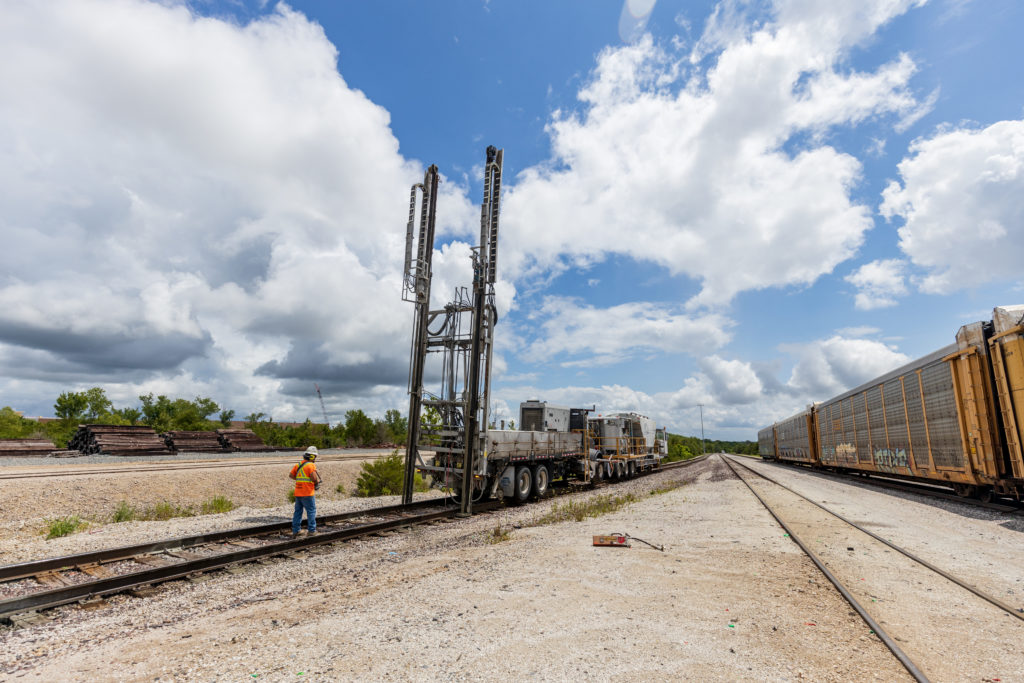The RailJET Subgrade Stabilization System increases efficiency and safety in railway repair and maintenance—while extending infrastructure longevity

Railways are critical for efficient and cost-effective movement of commodities across long distances. But they are only as productive as they are operable—making it crucial for track maintenance downtime to be minimal and repairs sustainable. With the innovative RailJETSubgrade Stabilization System, GeoStabilization International (GSI) is optimizing productivity through reduced cyclical track bed maintenance and costs, including limited hi-rail access only areas with dense high tonnage train traffic.
Explicitly intended for railroad soft-subgrade soils stabilization, the RailJET uses a modified jet-grouting process to improve subgrade integrity below mainline track, super-elevated curves, bridge approaches, rail yards and specialty track work, such as switches and crossovers. The hydrodynamic mix-in-place technique produces a soil-cement column—ranging from eight to 16 inches (203 to 406 mm) in diameter—to reinforce the soil both in bearing and shear. The mix-in-place system allows for grout to be delivered on demand with no waste or spoil mess to clean up during or after treatment.
“GSI’s first railway project was completed more than 10 years ago,” says Kyle Guenther, director railroad services at GeoStabilization International. “We dramatically expanded our capabilities and services further into the rail industry five years ago to help remediate geohazards railroads face every day along critical routes. These geohazards cause frequent and often unpredictable disruption to the movement of goods. The RailJET is the epitome of our core value: advantage through innovation. It allows us to quickly and safely mobilize via rail bound equipment to active track locations, complete treatment work and return to a tie up location. The mobility and versatility of the equipment significantly decreases repair time, and the track is immediately capable of moving train traffic once the equipment is clear. It extends the life span of the railway track infrastructure by improving subgrade stiffness, reducing long-term settlement and leaving a more resilient track bed to support the heavy cyclic loading conditions of freight traffic.”
Traditional maintenance and repair methods typically require access-way construction along the track or equipment to be rail loaded on flat cars and transported to the jobsite, offloaded and prepped for operation. Once the work is complete, access ways need to be removed or the equipment is reloaded to demobilize. These processes are logistically challenging, costly and can significantly increase a project’s overall duration—especially when working in limited-access areas. The hi-rail mounted equipment is a self-contained system, making it ideal for limited-access areas and where track windows are tight, as no additional railroad-provided equipment is needed. Being self-contained also allows for quick deployment on and off the track, reduced repair costs and increased jobsite flexibility. The RailJET provides a stable platform for railroad loading, increasing infrastructure longevity, reducing long-term maintenance costs, and providing protection from the potential dangers and damage of soft subgrade geohazards. Learn more about GeoStabilization International here.
 TEXTILES.ORG
TEXTILES.ORG


